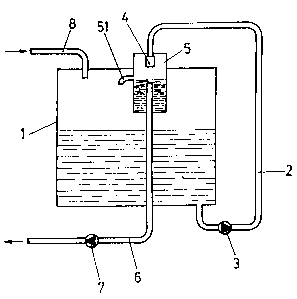Some of the information on this Web page has been provided by external sources. The Government of Canada is not responsible for the accuracy, reliability or currency of the information supplied by external sources. Users wishing to rely upon this information should consult directly with the source of the information. Content provided by external sources is not subject to official languages, privacy and accessibility requirements.
Any discrepancies in the text and image of the Claims and Abstract are due to differing posting times. Text of the Claims and Abstract are posted:
| (12) Patent: | (11) CA 2188060 |
|---|---|
| (54) English Title: | IMPROVEMENTS INTRODUCED IN WETTING SYSTEMS FOR OFFSET PRINTING AND A MECHANISM FOR THEIR APPLICATION |
| (54) French Title: | AMELIORATIONS APPORTEES AUX SYSTEMES DE TREMPAGE DANS LE DOMAINE DE L'IMPRESSION OFFSET, ET MECANISME POUR LEUR APPLICATION |
| Status: | Expired and beyond the Period of Reversal |
| (51) International Patent Classification (IPC): |
|
|---|---|
| (72) Inventors : |
|
| (73) Owners : |
|
| (71) Applicants : |
|
| (74) Agent: | ROBIC AGENCE PI S.E.C./ROBIC IP AGENCY LP |
| (74) Associate agent: | |
| (45) Issued: | 2002-02-05 |
| (22) Filed Date: | 1996-10-16 |
| (41) Open to Public Inspection: | 1997-04-20 |
| Examination requested: | 1996-10-16 |
| Availability of licence: | N/A |
| Dedicated to the Public: | N/A |
| (25) Language of filing: | English |
| Patent Cooperation Treaty (PCT): | No |
|---|
| (30) Application Priority Data: | ||||||
|---|---|---|---|---|---|---|
|
The improvements consist in supplying the wetting system with a water
based solution including a determined additive. This solution is subjected,
through a mechanism forming a part of this invention, to a process of
agitation by which it adsorbs a high oxygen content. As a result of these
improvements, the solution which wets the aluminium plate, from which the
printing is done, acquires a high free oxygen content, increasing the water-
ink interface and improving the quality of the printing.
Note: Claims are shown in the official language in which they were submitted.
Note: Descriptions are shown in the official language in which they were submitted.

2024-08-01:As part of the Next Generation Patents (NGP) transition, the Canadian Patents Database (CPD) now contains a more detailed Event History, which replicates the Event Log of our new back-office solution.
Please note that "Inactive:" events refers to events no longer in use in our new back-office solution.
For a clearer understanding of the status of the application/patent presented on this page, the site Disclaimer , as well as the definitions for Patent , Event History , Maintenance Fee and Payment History should be consulted.
| Description | Date |
|---|---|
| Time Limit for Reversal Expired | 2010-10-18 |
| Inactive: Correspondence - MF | 2010-08-10 |
| Letter Sent | 2009-10-16 |
| Small Entity Declaration Determined Compliant | 2007-08-21 |
| Inactive: IPC from MCD | 2006-03-12 |
| Inactive: IPC from MCD | 2006-03-12 |
| Inactive: Entity size changed | 2002-10-08 |
| Grant by Issuance | 2002-02-05 |
| Inactive: Cover page published | 2002-02-04 |
| Pre-grant | 2001-11-07 |
| Inactive: Final fee received | 2001-11-07 |
| Letter Sent | 2001-07-25 |
| Notice of Allowance is Issued | 2001-07-25 |
| Notice of Allowance is Issued | 2001-07-25 |
| Inactive: Approved for allowance (AFA) | 2001-07-16 |
| Inactive: Application prosecuted on TS as of Log entry date | 2001-04-20 |
| Amendment Received - Voluntary Amendment | 2001-02-02 |
| Inactive: Status info is complete as of Log entry date | 2000-11-08 |
| Inactive: Application prosecuted on TS as of Log entry date | 2000-11-08 |
| Inactive: S.30(2) Rules - Examiner requisition | 2000-11-01 |
| Letter Sent | 2000-01-19 |
| Application Published (Open to Public Inspection) | 1997-04-20 |
| Request for Examination Requirements Determined Compliant | 1996-10-16 |
| All Requirements for Examination Determined Compliant | 1996-10-16 |
There is no abandonment history.
The last payment was received on 2001-10-12
Note : If the full payment has not been received on or before the date indicated, a further fee may be required which may be one of the following
Patent fees are adjusted on the 1st of January every year. The amounts above are the current amounts if received by December 31 of the current year.
Please refer to the CIPO
Patent Fees
web page to see all current fee amounts.
| Fee Type | Anniversary Year | Due Date | Paid Date |
|---|---|---|---|
| MF (application, 2nd anniv.) - small | 02 | 1998-10-16 | 1998-10-15 |
| MF (application, 3rd anniv.) - small | 03 | 1999-10-18 | 1999-07-27 |
| Registration of a document | 1999-12-16 | ||
| MF (application, 4th anniv.) - small | 04 | 2000-10-16 | 2000-06-16 |
| MF (application, 5th anniv.) - small | 05 | 2001-10-16 | 2001-10-12 |
| Final fee - small | 2001-11-07 | ||
| MF (patent, 6th anniv.) - standard | 2002-10-16 | 2002-10-01 | |
| MF (patent, 7th anniv.) - standard | 2003-10-16 | 2003-09-08 | |
| MF (patent, 8th anniv.) - standard | 2004-10-18 | 2004-09-28 | |
| MF (patent, 9th anniv.) - standard | 2005-10-17 | 2005-10-07 | |
| MF (patent, 10th anniv.) - standard | 2006-10-16 | 2006-08-30 | |
| MF (patent, 11th anniv.) - small | 2007-10-16 | 2007-08-21 | |
| MF (patent, 12th anniv.) - small | 2008-10-16 | 2008-09-08 |
Note: Records showing the ownership history in alphabetical order.
| Current Owners on Record |
|---|
| TECNICAS ESPECIALES DE OXIGENACION, S.L. |
| DELTA GRAF, S.A. |
| Past Owners on Record |
|---|
| GERARDO ANTONIO ROMERO SALVO |